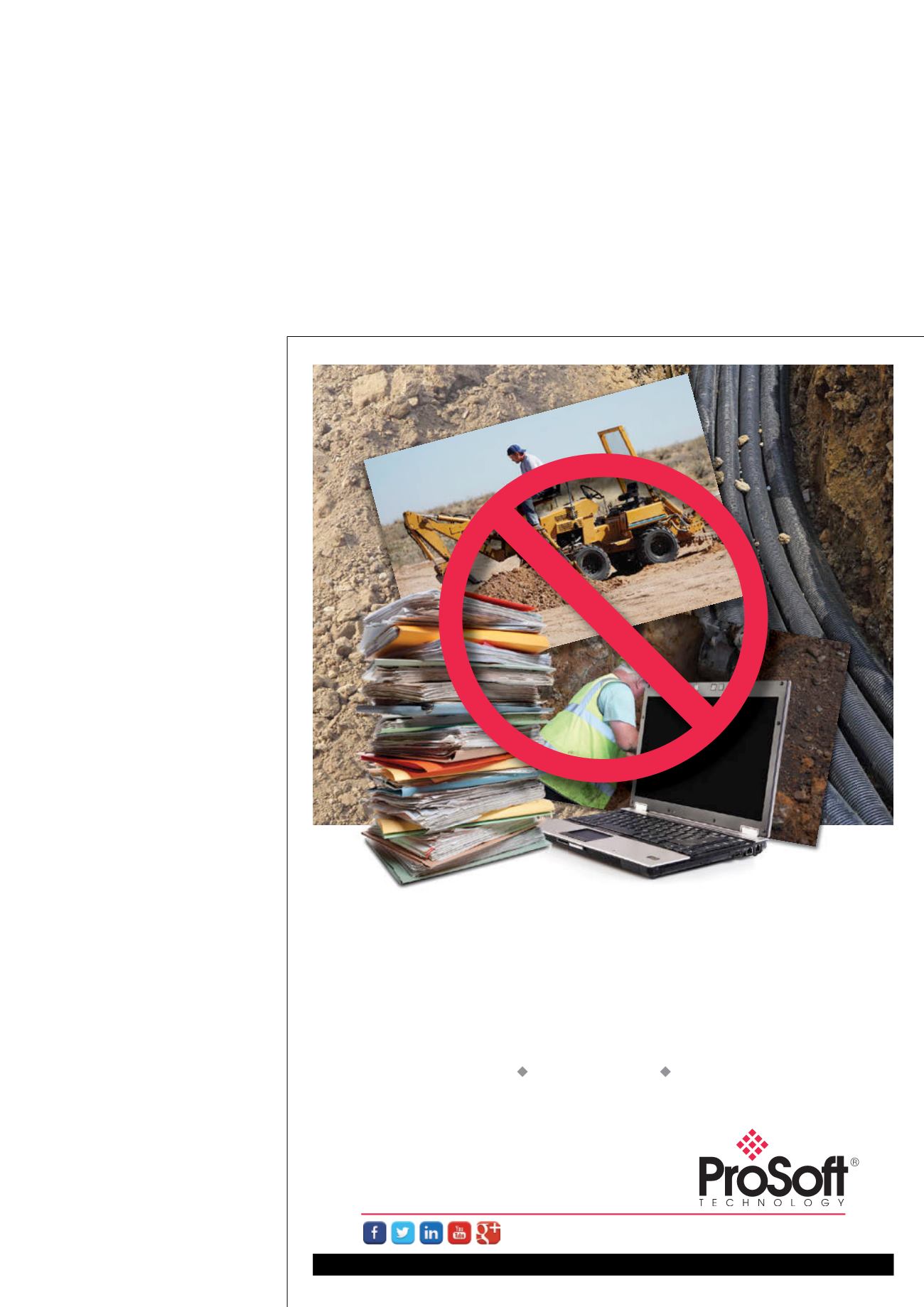
woven fibreglass cloth where fibres are oriented in both
the ‘hoop’ and ‘axial’ directions.
This difference in fibre architecture results in
drastically different mechanical properties. The two
composites have comparable tensile strengths, but as
can be seen in Figure 1, the woven cloth has a much
lower modulus of elasticity. This modulus is the physical
stiffness of the material. The minimum required modulus
for an effective long term repair is 5 x 106 psi, and as
illustrated above, the stiff uniaxial composite has a
modulus of approximately 6.3 x
106 psi whereas the stiff cloth’s
modulus is only 3.5 x 106.
Wet cloth vs stiff cloth
There are many advantages to
these pre-cured composites,
but most important is the fact
that they can be manufactured
in a controlled environment,
and then shipped to the jobsite
where they are secured to
the pipe with a high strength
adhesive. Manufacturing in a
controlled environment with
strict QA/QC procedures
ensures that every repair sleeve
is made to certain design
specifications (such as glass to
resin ratio) that are required to
result in a long lasting, durable
product. The difference with a
wet cloth composite is that it
is manufactured on the pipe,
where many environmental
factors could potentially
sabotage the composite
material structure. Wet cloth
composites are made in the
field by combining a woven or
knitted fibreglass cloth with a
liquid epoxy. This wetted cloth
is then wrapped around the
pipe, and cures in this position.
During the cure stage of the
composite, environmental
factors inadvertently can
enter the epoxy resin, such
as moisture, dust, and other
flying debris. Contaminates to
the composite structure can
allow moisture absorption and
are detrimental to durability.
Additionally, the uniformity of
the composite’s thickness will
depend entirely on the quality
of application by the installer.
The manufactured state of ‘wet cloth’ composites is
entirely in the hands of the installer, in contrast to stiff
composites that can be manufactured to a controlled,
designed state. Therefore, in a wet lay composite it is
difficult to control the ratio of resin to glass, the degree
of resin saturation, the alignment of the glass, and
consistency of tension in the repair.
Similar to the stiff cloth, wet applied cloth is also
not stiff enough to safely control bulging in a steel pipe.
Woven or knitted cloth composites are not stiff enough
Where Automation Connects
+1-661-716-5100
No
permits
No
trenching
No
conduits
No
programming
WIRELESS I/O
Bi-Directional Point-to-Point Deploys Quickly
For more information,
visit
psft.com/
A65
ASIA PACIFIC | AFRICA | EUROPE | MIDDLE EAST | L ATIN AMERICA | NORTH AMERICA


